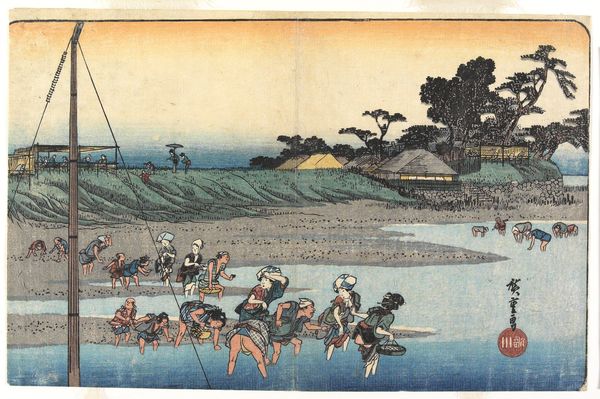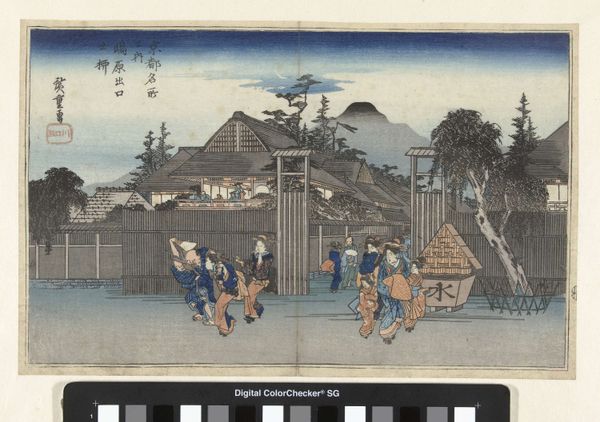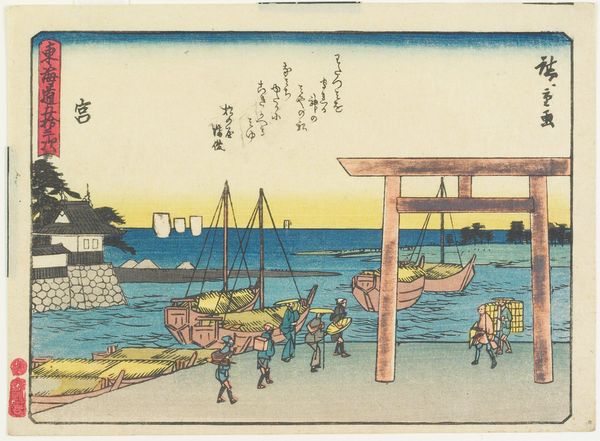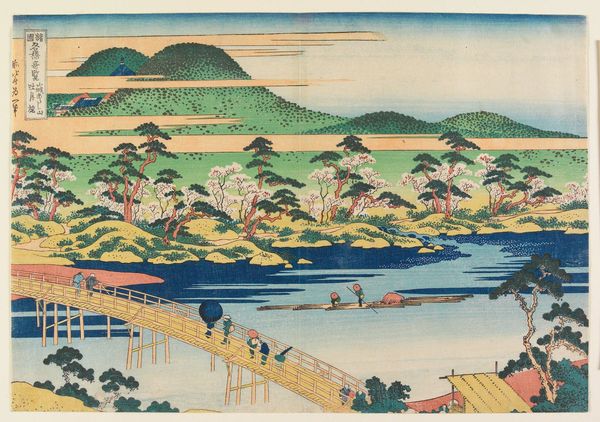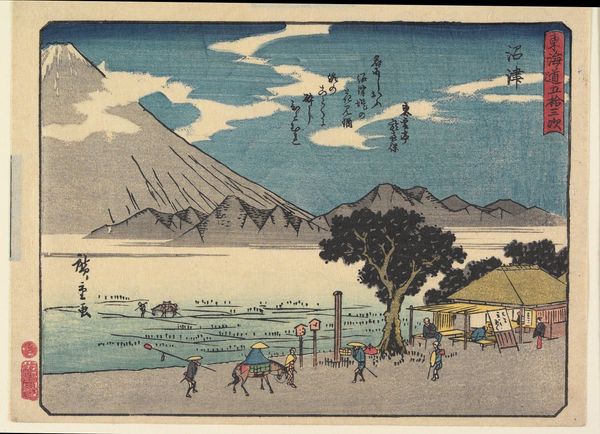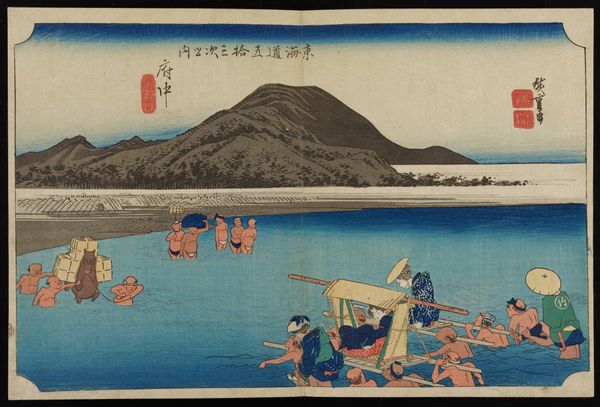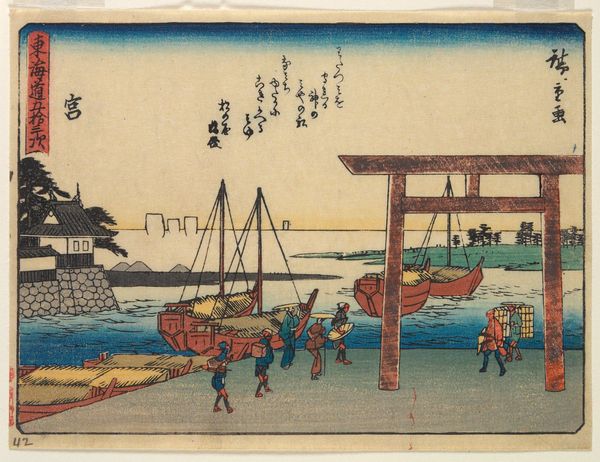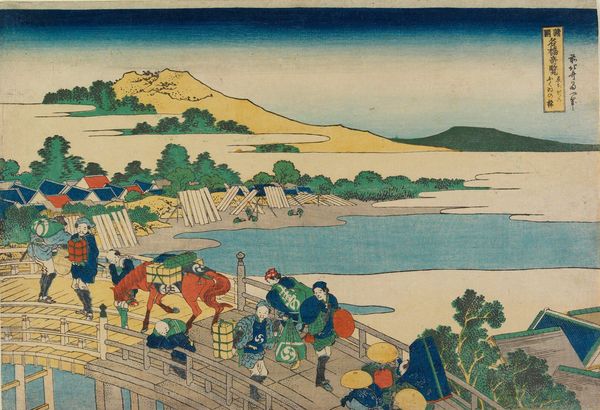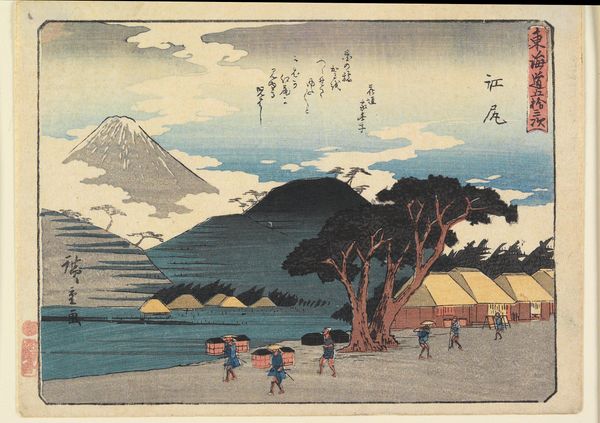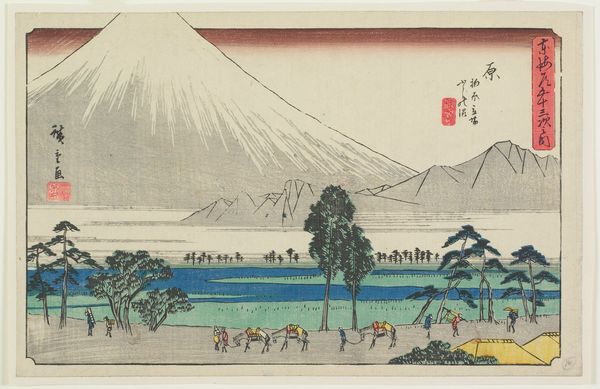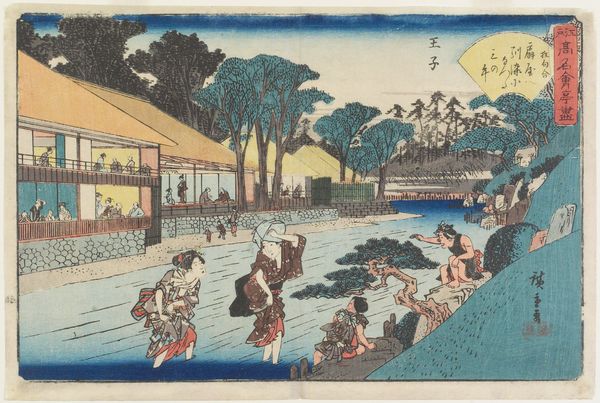
Dimensions: height 258 mm, width 376 mm
Copyright: Rijks Museum: Open Domain
Curator: This is "Kooplui op Nihonbashi," or "Merchants on Nihonbashi Bridge," a woodblock print created by Utagawa Hiroshige sometime between 1830 and 1840. It resides here at the Rijksmuseum. Editor: The muted palette gives it a peaceful, almost hazy feel, despite the bustling scene depicted. It reminds me of early impressionist watercolors. Curator: It's an excellent example of ukiyo-e, pictures of the floating world, a genre hugely popular amongst the rising merchant class of the Edo period. Editor: Right, ukiyo-e weren't about religious or aristocratic subjects like art patronized by the elites. The rise of the merchant class shaped the artistic landscape as this work depicts laborers doing hard jobs in the marketplaces. Curator: Indeed, and Hiroshige masterfully captured the vibrant street life. Notice how the artist uses perspective, drawing the viewer's eye towards Mount Fuji in the background, juxtaposing the daily life of the bustling city with this ever-present natural landmark. Editor: It also feels as if Hiroshige is celebrating this merchant activity. I'm struck by the sheer volume of goods being transported. I wonder, what were these goods made of and what was their material worth at that time? Curator: Those baskets likely contain fish – perhaps what was freshly caught that day. And Hiroshige didn't just produce art; his prints circulated amongst people like these merchants we see here. It’s quite an image of material consumption in early modern Japan. Editor: You are right. And let’s also keep in mind this wasn't some unique painting; it was a print, intended for wider distribution, almost like a form of early advertising in a way. What’s particularly evocative here are the visible aspects of its production as well. You can clearly see it's a woodblock print through its lines. Curator: Thinking about its distribution, these prints helped shape a collective imagination, too. They visually consolidated power relations and class identity through carefully coded images intended for popular consumption. Editor: Examining its layered, vibrant scene alongside the printmaking process and the economic activities is quite interesting. Curator: It certainly highlights how closely intertwined artistic production was with the social and economic life of the era. Editor: Indeed; there is more to it than meets the eye.
Comments
No comments
Be the first to comment and join the conversation on the ultimate creative platform.
